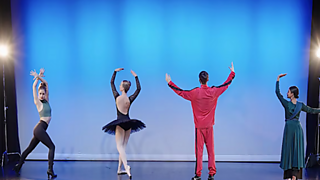- Try
- Rate
- Share
How did you rate this?

The Inside Story
Tom Dodds created the Radio Map and tells us all about it
Can you sum up the project?
The Radio Map is a new way to switch between the Βι¶ΉΤΌΕΔ World Service radio stations. Instead of browsing through websites to find the foreign language service you want, I’ve plotted them all on a map of the globe.
Why have you made this for us?
I wanted this to be a simpler way to switch between the radio stations. Instead of hunting around, you can now just use the interactive map and click on the country with the radio station you want to listen to.
And for those who are curious and don’t want to listen to a specific broadcast, you can explore the wealth of the Βι¶ΉΤΌΕΔ World Service radio in a new and interesting way.
What was your creative process?
I’m really interested in the cultural relevance of radio, so when I learnt that the Βι¶ΉΤΌΕΔ World Service created so much audio content, it seemed like the perfect opportunity.
I’d been experimenting with geographically plotted audio streams for a while now, and I felt that the current radio playback mechanism is quite drawn out. The multiple page changes and popup windows to playback different services takes time. By changing the interface and the way content is streamed, these hurdles can be removed, allowing stations to be switched within half a second. By making it easier to listen to different stations, I’m hoping more stations are explored and more content is discovered.
What were the hard bits?
Collecting all of the required data for the prototype was pretty difficult. Because of the scale of the operation of the World Service, it was tricky to know exactly which stations are intended for which countries and what languages are used for broadcasts.
Certain stations are intended for one country, others for two and some for whole continents. Getting these loaded into the map and displayed logically took some thinking. Regular reviews with the World Service team ironed out these issues.
Getting the interface to work correctly across all devices was quite challenging, but perseverance was the key.
What do you hope to learn from it being on Taster?
I want to let you see the scale of the Βι¶ΉΤΌΕΔ World Service operations and give you a means to quickly tune in to our stations around the world.
We’ll be measuring how many stations you tune in to and for how long for. We’ll then compare those results with audio playback traffic originating from the current website, .
It’ll be interesting to see how many of you tune in from outside of the UK. The interface is graphical and could be more accessible for non-english speaking users. I’d love to see if this is true in practice.
Plotting all of the stations is tricky because of the complications with languages and scope of each broadcast, so it’ll be great to get some feedback from you about how we could improve this for any version in the future.
Given the new interface design, we’d also like feedback about the prototype’s performance, especially on mobile devices.
If you’d like to let us know your thoughts, please email taster@bbc.co.uk
How was it built?
The prototype is written in React.js, using Redux, Leaflet and the Βι¶ΉΤΌΕΔ’s standard media player mechanisms (dash.js). The Βι¶ΉΤΌΕΔ holds schedule data for all of its radio stations, this is how we know what is playing at any given time. If a station is not live, it reverts to the last played broadcast on that radio station.
The backend is running on Node.js, which simply serves the frontend application and proxies the requests to fetch the schedule data from the Βι¶ΉΤΌΕΔs internal systems.
What next?
I’d like to open the project out to the wider Βι¶ΉΤΌΕΔ, including all local radio and network radio such as Radio 1, 6 Music etc. This would put all 80+ of the Βι¶ΉΤΌΕΔ radio stations instantly playable in one place. Only when you have them all together do you realise quite how much radio content the Βι¶ΉΤΌΕΔ produces every day.



